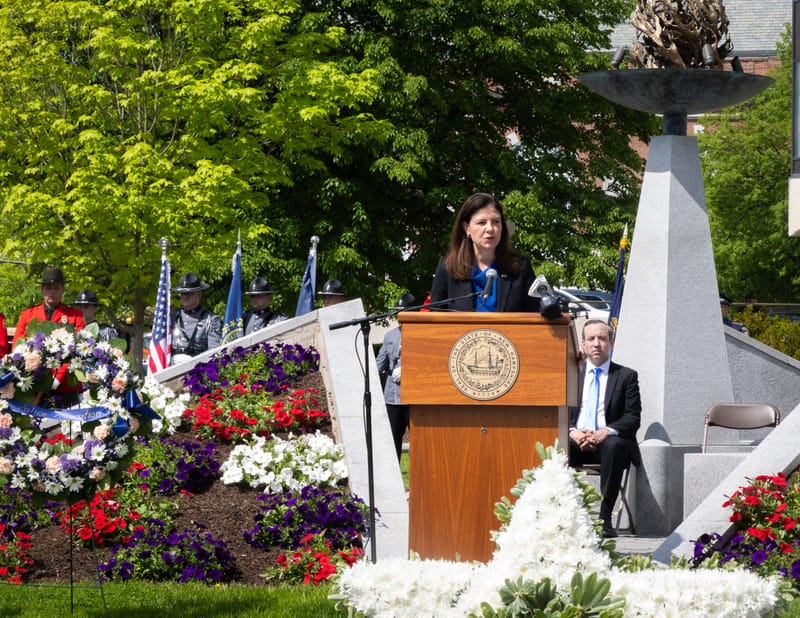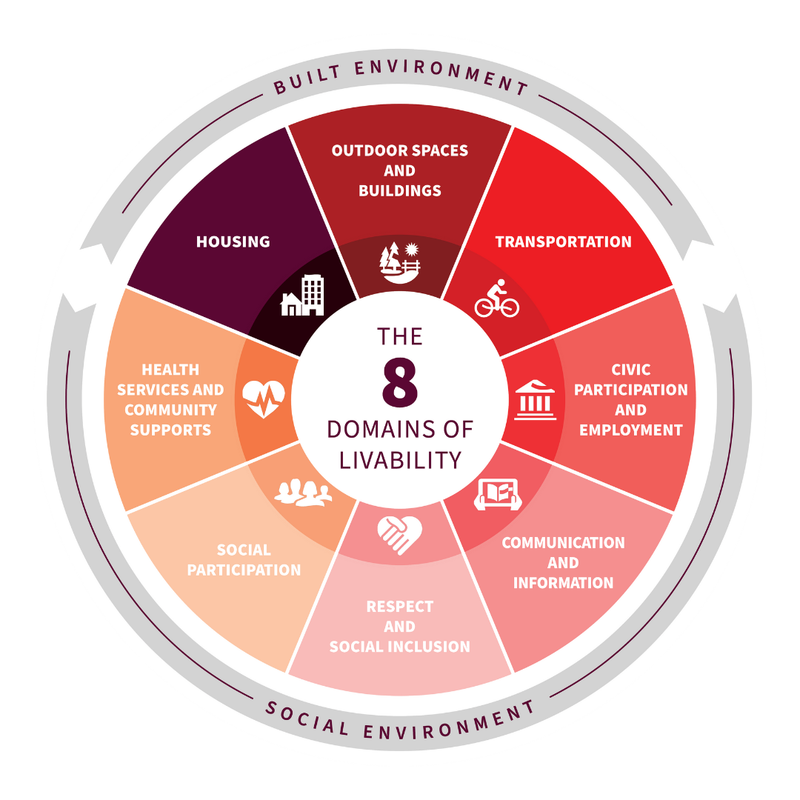A new horizon for the city’s homeless: Revamping the old and envisioning the new
A newer New Horizons is in the making. It will take funding from all sources – a capital campaign, along with federal and state dollars, and an attitude adjustment in the community about the goals.
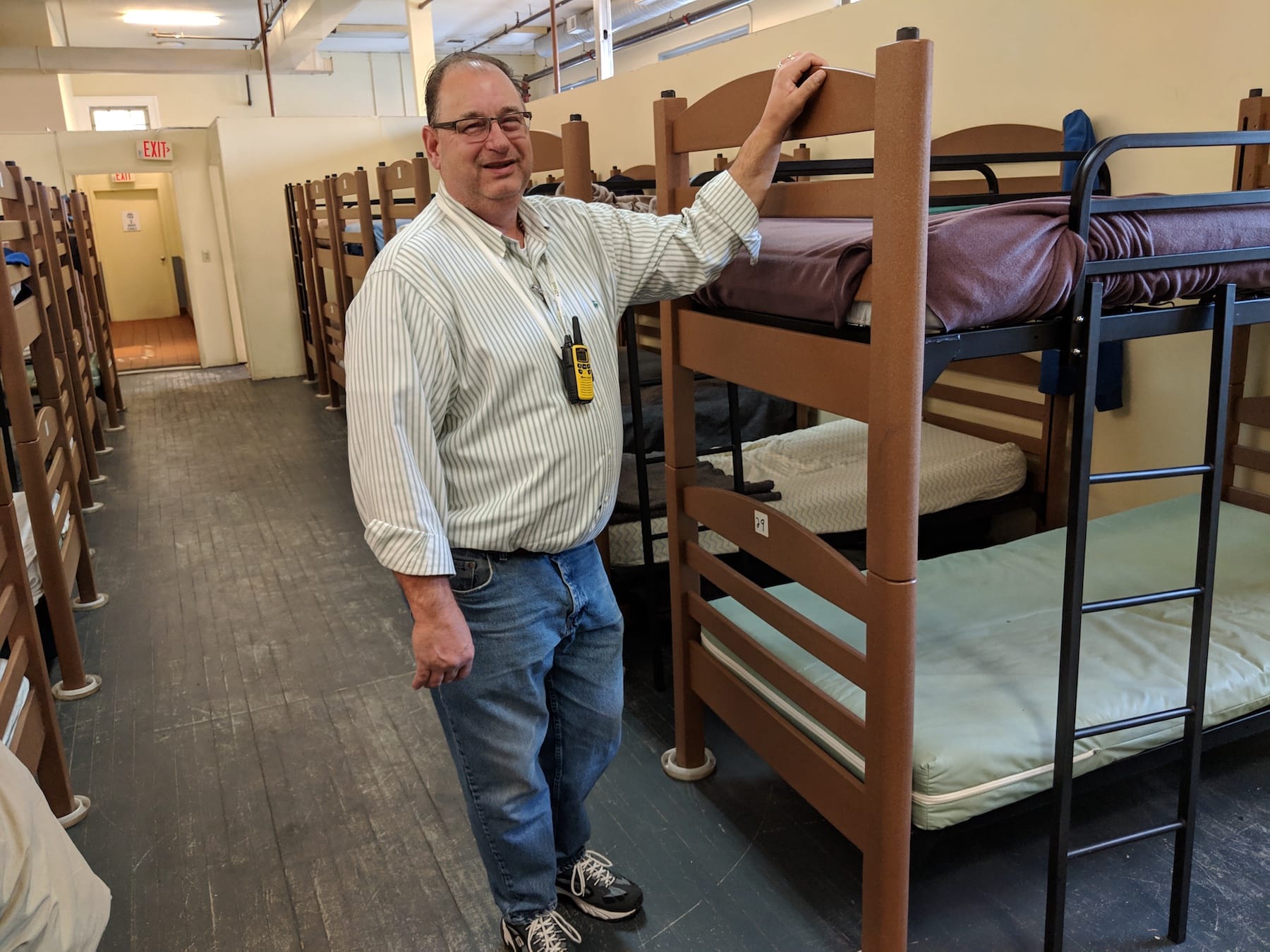
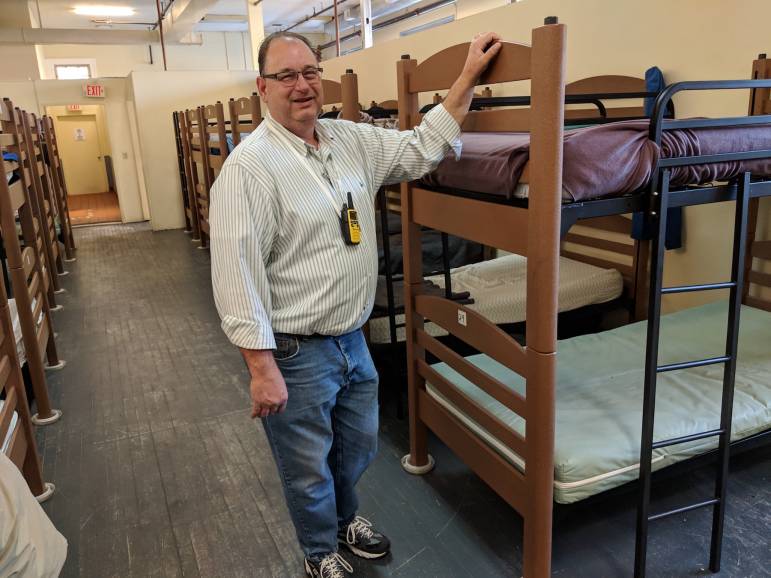
MANCHESTER, NH – Changes are on the horizon at Manchester’s homeless shelter, major adjustments long overdue for addressing the chronic issue of how to meet people where they are and move them from limbo to living again.
It is going to require community support, discipline and adjusted thinking from all sides, says Maureen Beauregard, President of Families in Transition/New Horizons.
Phase 1 is already in action – interior construction to maximize the existing space, make it safer, and support the new case management systems in place, plus keeping the welcome mat out all day instead of whisking clients out after breakfast with no services until dinnertime.
A new program manager has been hired and FIT is beefing up outreach teams to hit the streets with higher visibility and the resources to ideally help those who previously have been unsheltered.
Phase 2 will include 14 new units of permanent supportive housing at a yet to be announced location. The paperwork is filed, says Beauregard, and she should know in May if that’s a go. If the planets align, that project could be a reality by the first quarter of 2020.
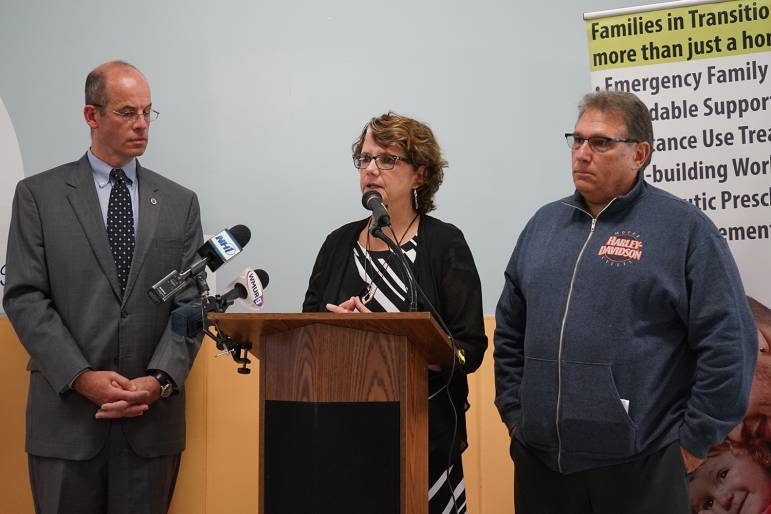
FIT/New Horizons also recently was approved for a community charrette by Plan NH, which will bring the immediate community together to talk about not only the building, but the neighborhood.
“After the charrette we’ll get a written report a few weeks later, then we’ll be applying for monies to be able to get development work done, hire an architect and engineer and really look at the facility and its capacity, what it could be. By the end we’ll have a solid vision for New Horizons and we’ll take it to the city for approval,” Beauregard says.
A building in dire need
The building at 199 Manchester St. was built in 1951 as a YMCA. It is structurally sound, but has many issues that have not been addressed, from plumbing to cosmetics. It is also considered a “wet” shelter, meaning that while no drugs or alcohol are permitted in the building, a person who is actively using may still find a place to sleep.
“We operate on what’s called ‘harm reduction,’ which means we want you to come in and we will reduce all barriers to you coming in. Then, once you’re in we will engage, engage, engage,” Beauregard says. “When I look at this shelter I see a place that needs to be a campus, that’s welcoming and encourages people to come in. We’re not there yet, but I envision a dining hall where people can come in, get a cup of coffee, use the restrooms, eat three meals, take showers, and that we have the capacity and staff to help everyone move up and out of the shelter.”
She says there are people who’ve been coming to the homeless shelter for years and really don’t have anyplace else to go.
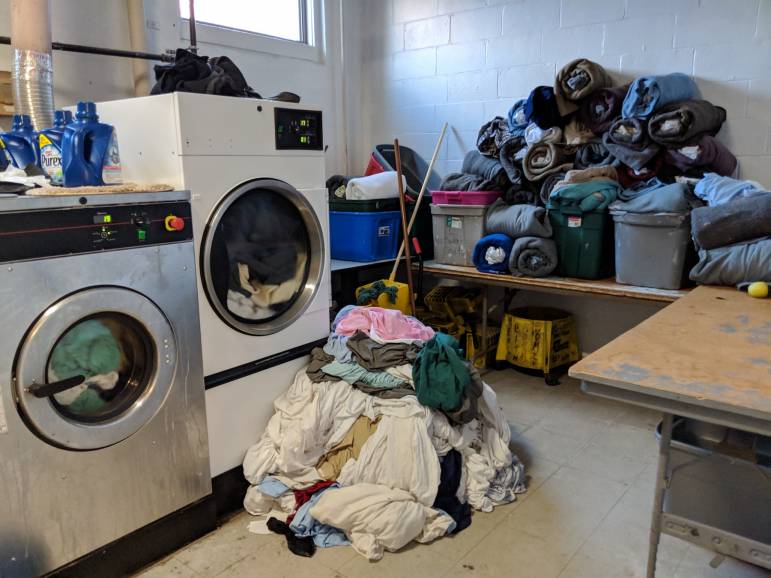
“When you look at the facility of New Horizons, you see a facility in dire need. We’re marching toward a facility that has the capacity to be able to provide safe recovery shelter for folks who don’t want to use substances. What if we created a third or fourth floor that had housing? Our board has compiled a strategic plan and that plan gives a big picture overview, as well as a step-by-step plan for how we’re going to get there,” she says.
Just a few more puzzle pieces need to click into place – like the proposal for permanent housing – and she will be able to present a working plan to the public.
A newer New Horizons is in the making. It will take funding from all sources – a capital campaign, along with federal and state dollars.
“All of it,” says Beauregard. “It has to be a public-private partnership. We figure it will take a year or year-and-a-half to raise the money, and we don’t know what the cost of redoing the shelter will be. We don’t even know what the architect or engineer will say about the space itself, but we think it’s solid.”
The future vision has been informed by field trips to San Diego and Phoenix which reflect the innovation happening in shelters and the overall approach to homelessness that’s rising up all around the country. Some of them include legal and employment services and homeless courts housed in separate resource centers.
It will also take an attitude adjustment by the public, and some soul-searching, she says. Do people simply want the visibly homeless to disappear, or do they want their condition of homelessness to be solved with a relevant system of support in place, so the cycles can be broken and they can become contributing members of the community?
“The picture is not bleak,” Beauregard says. “It’s hopeful. I can’t wait to see the future. I’m so excited about the possibilities, and I’m not saying that because it’s my job. I believe it to the core of my being.”
Slow to Change
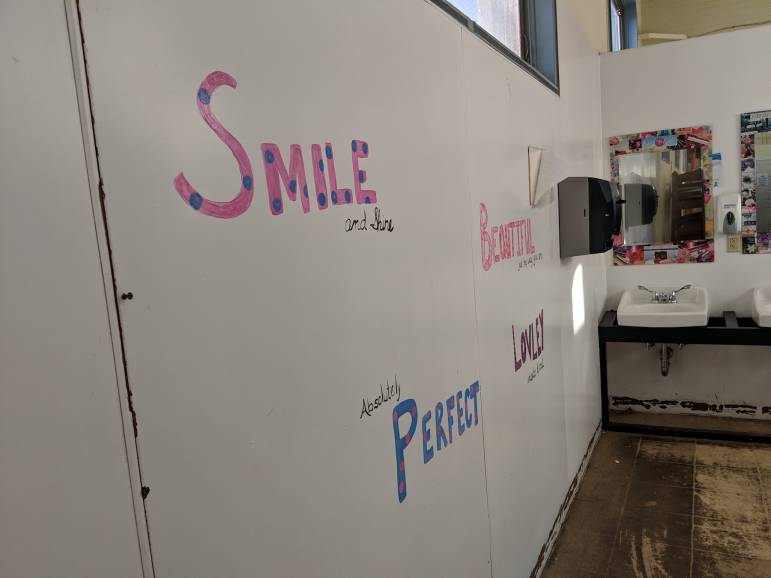
Since the Oct. 2017 merger announcement, effective Jan. 1, 2018, Beauregard, FIT/New Horizons board members and staff have been working on a strategic plan. Going in, the plan was to mostly observe and discover what was working – and what wasn’t. Early last year New Horizons applied for a grant to provide more outreach workers, and they have received a five-year $350,000 grant to be used in Manchester, Dover, Wolfeboro and Concord, the four geographic areas FIT serves. The hiring of a program manager will allow for more organized outreach on the streets in cooperation with Waypoint and the mobile crisis unit.
While that money continues to wind its way through the legislature, Mayor Craig took action and laid out a plan in January, approved by the Board of Aldermen, to provide gap funding to get things moving – $130,000 from Community Development Block Grant (CDBG) funds for the structural changes, which will include two “safe recovery” areas – one for men and one for women – 14-beds each, to accommodate those in recovery; and $70,000 from the city’s Affordable Housing Trust which has allowed the shelter to remain open during the day and hire two additional case managers.
The difference is already palpable.
Within just a few months, the shelter has begun serving three meals a day instead of just breakfast and dinner, and clients are welcome to stay inside in the dining room, which doubles as a common area. They can drink water, watch TV, socialize, and lay down their backpacks.
In another few weeks they will adjust curfew and bedtime – allowing clients to come inside a little later, and stay up past 8 p.m.
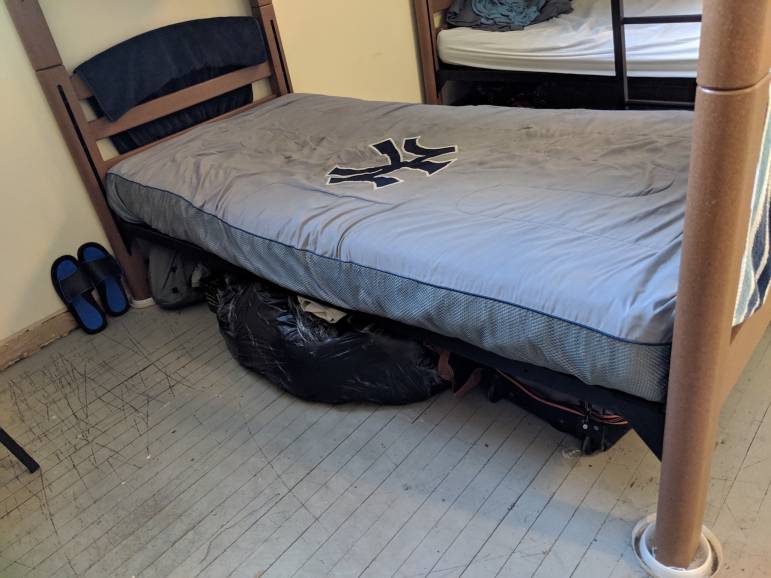
Over the years there have been people who, for one reason or another, were banned, usually due to legal complications. In the last few months the shelter has relaxed those rules and is circulating word on the street that it’s a clean slate for everyone.
“If you haven’t been allowed into the shelter, for whatever reason, come talk to us,” Beauregard says. “We have to make sure that everyone is safe here, but the goal is to meet everyone where they are and move forward from there.”
The dining hall these days also serves as a spillover sleeping room, as the numbers of those seeking shelter have been well over capacity this winter – sanctioned for 76 beds, the shelter turns no one away, and has slept as many as 153 in one night. A stack of think mats in the corner of the dining hall must be laid down and restacked daily.
Fire Chief Dan Goonan says his department works closely with the shelter to make sure exits are open and the place is safe. Even though it exceeds capacity, there’s no place else for people to go.
“We now have two case workers and an intake worker for about 140 people. Before this year there wasn’t the capacity to start offering help right away. Now we can start building case plans and collect documents people need, to scan and hold them, and we also have added a recovery support worker,” says Beauregard. As of last week that staff member had done more than 60 substance use assessments and moved people into treatment.
“It’s incredible – we are doing things that have never happened here before,” Beauregard says.
Senior Shelter manager Wayne Jacques has been working at New Horizons for six years, and agrees that the changes have been good for all, staff and clients.
“The biggest difference since the merger is that we’ve been allowed to look at every single thing, every rule, and it’s afforded us that opportunity to do things differently,” Jacques says. “We now have four case managers, a Certified Recovery Support Worker, an intake manager, we’re going to have two safe recovery units – all of that has given us new opportunities to really help people. We never had that before.”
As he makes the evening rounds and prepares for a house meeting at 6:30 p.m., Jacques attends to a woman who is on a crying jag, and then excuses himself to deal with a client who appears to be high on spice. Jacques stays with him and tries to keep him calm until paramedics arrive.
Afterwards he mentions that while things like that happen, he does his best to keep it all low-key.
“With so many people here on a given night, anything can happen. You wouldn’t know that we had a health emergency going on,” he says. He mentioned that there’s a client suffering with kidney stones around the back of the building waiting for an ambulance. “That’s the trick, not creating a crisis where there isn’t one. The quieter you are and the more privacy you can give them, the better.”
Beauregard is the first to admit there are still a lot of unresolved issues at the shelter. People have legitimate reasons for not wanting to sleep there, from personal safety issues to the number of rules.
Some clients have been vocal about bedbugs and lice, and say that’s a reason they choose not to sleep there. Such issues in communal spaces are not uncommon, and It’s something shelter staff works hard at controlling, Beauregard says.
“My concern is people will think the shelter is lice-ridden or full of bed bugs. We do our best to monitor the people who come in and who have lice, and the most we can do is ask them to consider taking a shower and getting some new clothes from the clothes closet upstairs. Sometimes they refuse,” Beauregard says.
“What people choose to do as individuals is something we can’t control. We can’t make them take a shower. We also do our best to work with those who are sex offenders, arsonists, those with lice – but the number of people who have any of those issues is small in comparison to the full number of clients we have. People reporting out things that are affecting a couple of people but not focusing on the fact that we now how additional staff, are redoing the second floor sleeping spaces and the first-floor bathroom, or mapping out an anti-panhandling campaign are missing the real momentum,” Beaurgard says. “This is what the community needs to know about the shelter.”
Dumping Ground
“There’s a conversation out there in the community about New Horizons, that it’s a dumping ground. Part of our plan is our relationship with other communities, and this is one of the things the mayor is helping us with,” says Beauregard.
“We got a call from another community saying their cold-weather shelter was over capacity and they’d be sending people to us. We made it very clear that, no you’re not. We also had a person come to us with a ‘notice of decision’ from their city welfare department – the determination was to give them bus fare to Manchester. We sent them back,” Beauregard says.

“We pass everything like that on to the mayor’s office to deal with, and she’s making calls on our behalf,” Beauregard says. “This kind of thing has to stop. As the leading provider for the homeless in our city, we don’t feel everybody should be dropping everybody off at New Horizons. We also don’t feel people should be released from emergency rooms to our shelter when they’re still medically fragile. Communities need to create their own infrastructure to handle folks in their places of origin.”
As part of the governor’s $45 million “hub and spoke” model for managing the opioid crisis and delivery of services, it’s integral for every community outside of Manchester to find their own solutions.
“This is where we need to stick to geographic areas – they have their hub and we need to make sure we are adhering to saying ‘no, you’re from that hub, and that is the hub that needs to help you,” Beauregard says.
After 28 years as a professional in the recovery and housing trenches, Beauregard says it’s a new day, and the consortium of local help agencies working at really solving homelessness is a bright spot.
“We think and feel about a situation, but we don’t know – meaning, we don’t have specific data about who the homeless are, why they are homeless, where they came from, or what they need, but through outreach we’ll get more of that information and create programs specific for the various populations,” Beauregard says. “People are looking at this like it just happened over the last year, when this issue has been going on for years. We need to look at the bigger picture.”
The system once in place to serve the mentally ill was dismantled decades ago, with no successful alternative. And New Hampshire’s historic lack of investment in mental health and substance use disorder treatment programs has finally caught up with us, says Beauregard.
“Now we have to recreate them. We used to get HUD funding quite a bit for actual bricks and sticks projects, but that doesn’t happen anymore. That well has dried up. If we’re going to really solve this, it’s time for the community to get behind it,” she says.
Community buy-in
There has been talk from some officials and residents across social media that there are too many services concentrated in the city’s downtown. Beauregard hears that, but she believes it’s time to elevate the existing services, and expand them in a way that improves the downtown – and the lives of those in need of critical services.
“You could move New Horizons to the airport, but it won’t stop what’s happening downtown. We need to be part of the solution, and be integrated with the businesses here. Having a campus that offers a place to put your bag during the day, whether it’s lockers or a locking trunk under a bed, and showers, laundry, a place to charge your phone, a post office, job services – that’s what we need to be offering, along with outreach and more permanent housing solutions,” Beauregard says.
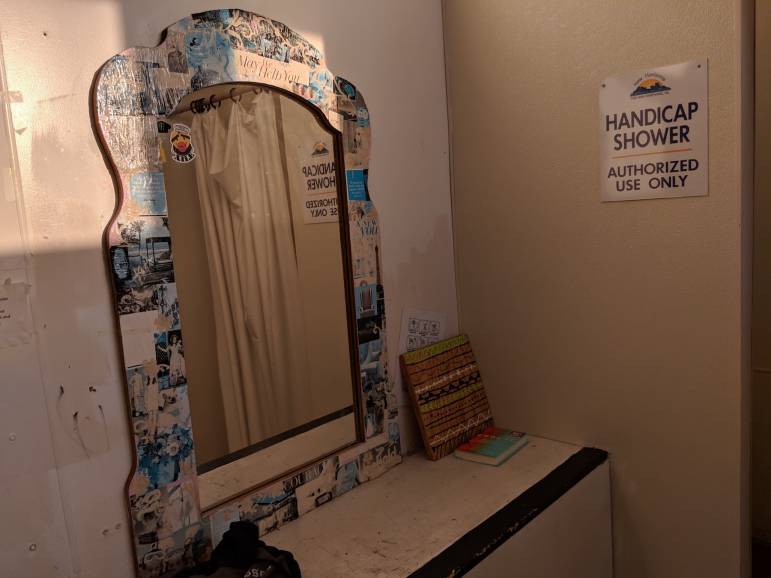
New Horizons board member Kristi Scarpone served on the board for about six years prior to the merger, and she shares Beauregard’s enthusiasm for the future.
“From a board perspective what excited me most about the merger was the vision Maureen and others set out – that we can do this better in partnership and take a much more holistic approach,” Scarpone says.
“Now that we’re more than a year in, we’re asking questions like, ‘Do we know everybody here? Do we really know who’s checking in every night at 199 Manchester Street? The idea of creating an environment that addresses uniquely who our clients are rather than offering a one-size-fits-all solution for food, shelter and treatment is exciting to me,” Scarpone says. “We’re not just about bricks and mortar; now we are finally looking at how we can go deeper and address the issues that result in homelessness.”
People talk about the effects of New Horizons on the neighborhood. But with a big junk yard next door, and minimal street lights, Beauregard would ask what effect the neighborhood is having on New Horizons.
“It’s not that attractive. Look at the junkyard. And at night it’s really dark. One thing Detroit did when they were climbing out of an economic crisis was to put more lights downtown. It brings much more humanity. Imagine if we could have a campus setting that actually drew people in? We do try and keep them on our property, but it’s hard to do. Some more are coming in to eat, but they leave because there aren’t enough tables for everyone at once,” Beauregard says.
Housing Needs
Homelessness is pretty straightforward – it describes those among us who have no place to call home. While those recovering from addiction or newly released from jail most often find themselves in need of shelter services until they find solid ground again, there is a growing issue with a lack of “affordable housing” in the city.
A check-in with the city Housing and Redevelopment Authority Monday confirmed the current waiting list for a unit in one of the city’s nine public housing complexes is a year and a half; the wait for Section 8 housing is seven years. Section 8 Housing Choice Vouchers pay the balance of a rent payment that exceeds 30 percent of a renter’s monthly income. The rental unit must be inspected and approved by the Manchester Housing Authority and the rental amount must be at or below the Fair Market Rent set by HUD.
The city provides financial assistance for housing in Manchester mainly through federal funds from HUD, which include the Community Development Block Grant Program, the HOME Program and an Emergency Shelter Grant. The use of these funds is restricted to initiatives that provide affordable housing or shelter to low-income people.
In addition to federal money, the city also has an Affordable Housing Trust fund which is available for housing initiatives by developers. Money is allocated through the city annually as a part of the Community Improvement Program process and on a project-specific basis. Developers must contact city housing with proposals.
Other funding sources for housing help comes through the New Hampshire Housing Finance Authority including HOME funds, the Affordable Housing Fund, tax-exempt bonds and Low Income Housing Tax Credits.
But housing issues go beyond the unsheltered. Even moderately-priced housing, or workforce housing, is scarce.

According to the National Low Income Housing Coalition, a person would need to earn $22.32 an hour to afford a modest two-bedroom rental unit, or work 123 hours per week at the current minimum wage of $7.25 per hour.
As outlined on the city’s website, the aforementioned Community Improvement Program funds are used locally to “increase the availability of affordable housing, provide security deposits and rental assistance, eliminate lead based paint hazards, advocate for individuals being discriminated against and provide shelter to the homeless” through the following organizations:
- NeighborWorks Southern New Hampshire
- Families In Transition
- The Way Home
- NH Legal Assistance
- Serenity Place
- Helping Hands Outreach Center
- Angie’s Shelter
- Emily’s Place
- Manchester Housing and Redevelopment Authority
- New Horizons Soup Kitchen, Food Pantry and Shelter
To many who have lived their whole lives in the city, times have definitely changed. The need for services for the homeless and working poor have expanded, and in the last five years, exacerbated by fall out from the opioid crisis.
“I grew up in Manchester, and the issues here have definitely changed from when I used to drive my 1978 Buick Riviera down Elm Street,” says Scarpone, who left the city for 30 years before returning. “The opioid crisis wasn’t a thing.”
Homeless or Panhandling?
Part of the mayor’s initiative includes a public awareness campaign in partnership with the Greater Manchester Chamber of Commerce, and Intown Manchester.

⇒Related Story: What do do about homelessness, panhandling and the ACLU?
An outline of the anti-panhandling campaign will be shared during the March 25 Homelessness Task Force meeting, the third-such meeting since February, which has been convening at the city health department. Made up of about 30 people from human services and city government, the group is zeroing in on resolving homelessness and panhandling.
Tackling both problems at once is important, says Beauregard.
“It’s important that panhandling be defined as panhandling and homelessness understood as homelessness. We’ve made it clear that the multiple barriers to getting into the shelter that used to exist are no longer in place. People who aren’t
coming in are out there for a reason that’s bigger than New Horizons,” Beauregard says.Part of the campaign will emphasize that handing out food or money to those panhandling with signs along city streets does not help anyone.
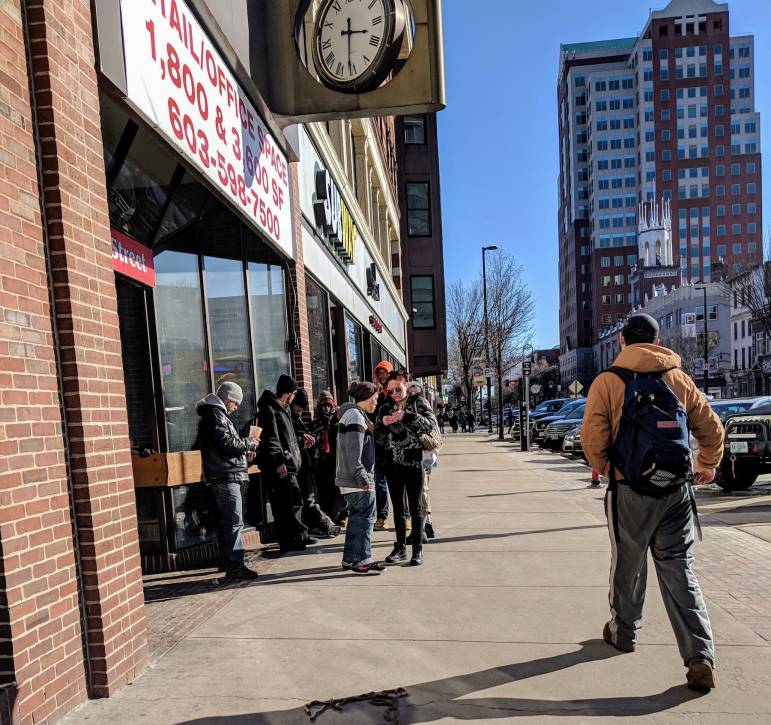
“We are serving three meals here, and it’s really good and nutritious food. Nobody should need a hand out – we provide 700 meals a day, and our food pantry does 900 boxes of food a month,” Beauregard says.
The campaign will also include messaging and talking points for those who aren’t sure what to say to those panhandling downtown, according to Mike Skelton, CEO and President of the Chamber.
“Our challenge is one of real impacts that are of concern to business owners, and one of perceptions that may impact our broader business climate and block out news and recognition of the many positive things happening across the city. Any plan to tackle this issue has to involve multiple strategies, one of which will be a messaging campaign around panhandling and the best way for the public to truly help those in need,” Skelton says.
“This plan and the accompanying activities supporting it will be coordinated with the citywide Homelessness Taskforce, as the root causes of this issue are bigger than just the downtown area or any one organization, and successful progress will require collaboration across many partners,” Skelton says.
Beauregard says having a unified message coming from the Chamber and Intown Manchester, and service agencies like Waypoint and New Horizons, along with the faith community, reinforces that unity is key.

“Finally it feels like the community is getting that we’re all in this soup together. We need to be a welcoming place at New Horizons so that when the panhandling money dries up, we’re there,” Beauregard says. “I was speaking to a faith-based group who give out $10 gift cards to Dunkin Donuts to those panhandling on corners. Ten dollars would get me out on the corner. I told them to please, instead ask that these folks go to the shelter for whatever they need – we have food and coffee – and once they’re there, we can help get them the other things they need to move their lives forward.”
She says she knows people want to help.
“The group giving out the gift cards, they do wonderful work and an amazing food drive every year. People sincerely want to help their fellow citizens in need, but there is a proper way to help, and that’s what we have to educate the public about,” she says.
Action Steps
Defining the way forward means a little more patience from the public, and reassurance from New Horizons – and the city – that changes will start shifting into focus quickly, says Beauregard. People can begin by not giving to panhandlers and, instead, donating to their favorite charity.
“People have great compassion, and so giving to an organization that’s doing good work helps,” she says.
“We need an army at New Horizons. We’d love to have a steady flow of volunteers coming in to help prep for breakfast – or any meal,” she says. A short health-safety training session is required for volunteers, but it’s not intense, she adds.
Scarpone says she has learned that it’s important to meet people where they are. She and her daughters like to volunteer at the Family Shelter, and recently invited a mother and her daughter to attend a show at the Palace with them.
“I’m a Palace parent, and our daughters are both in the eighth grade, and so my daughter asked me if we had scholarships at the Palace, and I said we sure do. And so, not only are we going to see ‘Mary Poppins’ together at the Palace, but this young girl will also be attending April vacation camp at the Palace. She’s thrilled, and so is my daughter,” Scarpone says.
“I think just showing up and spending time with people is important. There are art supplies at the family shelter that have already been donated. A person can just show up. Pick a Monday once a month and be a person who keeps showing up,” Scarpone says.

